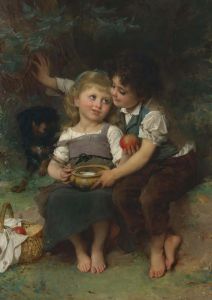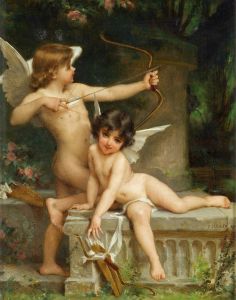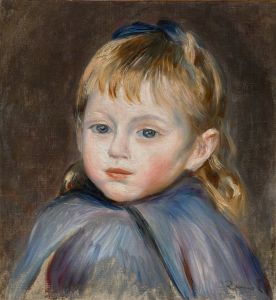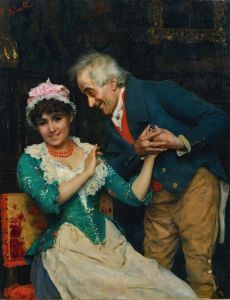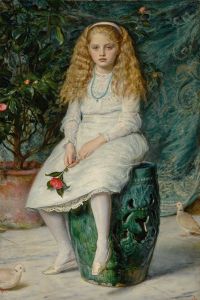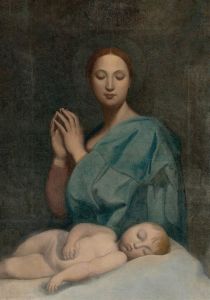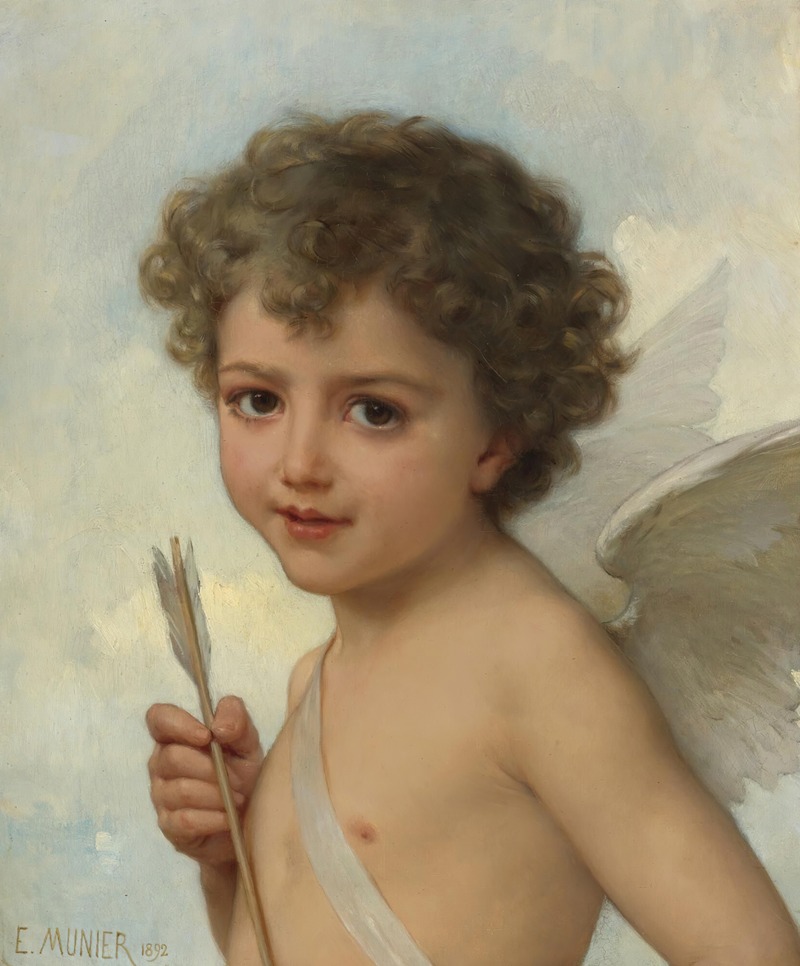
Amour
A hand-painted replica of Émile Munier’s masterpiece Amour, meticulously crafted by professional artists to capture the true essence of the original. Each piece is created with museum-quality canvas and rare mineral pigments, carefully painted by experienced artists with delicate brushstrokes and rich, layered colors to perfectly recreate the texture of the original artwork. Unlike machine-printed reproductions, this hand-painted version brings the painting to life, infused with the artist’s emotions and skill in every stroke. Whether for personal collection or home decoration, it instantly elevates the artistic atmosphere of any space.
Émile Munier was a French academic artist known for his detailed and charming paintings, often featuring children and domestic scenes. One of his notable works is "Amour," which exemplifies his skill in capturing the innocence and beauty of childhood. Munier was born in Paris on June 2, 1840, and studied at the École des Beaux-Arts under the tutelage of renowned artists such as William-Adolphe Bouguereau, who greatly influenced his style. Munier's works are characterized by their realistic portrayal, attention to detail, and the use of soft, delicate colors.
"Amour" is a painting that reflects Munier's fascination with themes of love and innocence. The title, which translates to "Love" in English, suggests a focus on the purity and tenderness associated with the concept of love. Munier often depicted cherubic children and young women in serene and idyllic settings, and "Amour" is no exception. The painting showcases Munier's ability to convey emotion and narrative through the expressions and postures of his subjects.
The composition of "Amour" is carefully arranged to draw the viewer's attention to the central figure, often a child or a young woman, who embodies the theme of love. Munier's use of light and shadow enhances the three-dimensionality of the figures, giving them a lifelike presence. The background is typically rendered with soft, muted tones, allowing the subjects to stand out and emphasizing their importance within the scene.
Munier's technique involved meticulous brushwork and a keen eye for detail, which is evident in the textures of the fabrics, the softness of the skin, and the delicate features of the faces in "Amour." His training under Bouguereau is apparent in the smooth, polished finish of the painting, a hallmark of the academic style of the time. Munier's ability to capture the subtleties of human expression and the play of light on different surfaces contributes to the overall impact of the painting.
Throughout his career, Émile Munier gained recognition for his ability to evoke emotion and tell stories through his art. His paintings were well-received in both France and abroad, and he exhibited regularly at the Paris Salon. "Amour" is a testament to his skill and his dedication to portraying the beauty and innocence of his subjects. Munier's work continues to be appreciated for its technical excellence and its ability to capture the timeless themes of love and childhood.
In summary, "Amour" by Émile Munier is a quintessential example of the artist's work, showcasing his mastery of the academic style and his focus on themes of love and innocence. The painting reflects Munier's attention to detail, his skillful use of light and shadow, and his ability to convey emotion through his subjects. As a result, "Amour" remains a celebrated piece within Munier's oeuvre, admired for its beauty and its evocative portrayal of the human experience.









